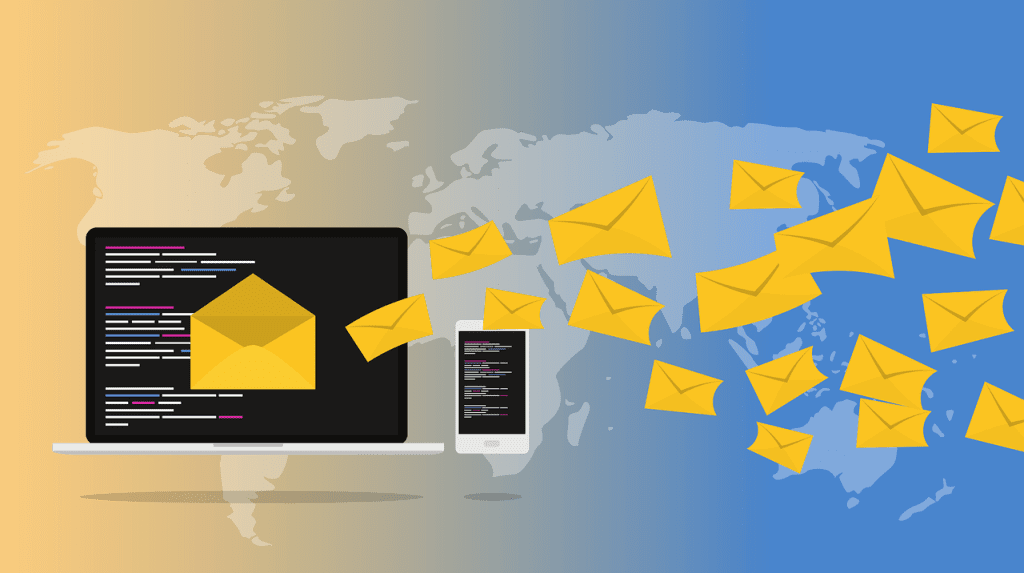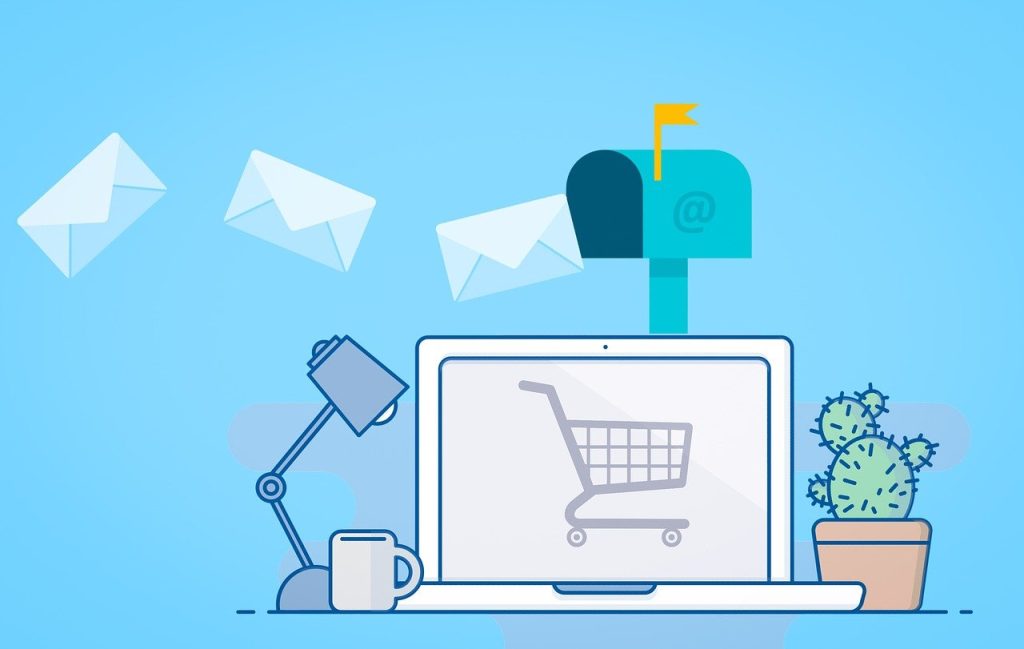Have you ever opened your inbox only to find it filled with promotional emails? You might skim through a few, delete some instantly, or even click on a compelling subject line. Whether we realize it or not, email marketing is one of the most effective ways to distribute content and engage an audience. Unlike social media, where algorithms dictate visibility, emails land directly in inboxes, making them a powerful tool for businesses looking to maximize reach and conversions.
But how does email marketing truly stand out in content distribution, and why should it be a priority for your business? Let’s dive deep into its benefits, strategies, and future trends.

How Email Marketing Powers Content Distribution
1. Direct Access to Your Audience
Unlike social media platforms, where visibility depends on engagement metrics and paid promotions, email marketing offers direct access to your audience. Your content reaches their inbox, increasing the likelihood of engagement.
2. Personalization & Segmentation for Better Engagement
Through personalization and segmentation, businesses can tailor messages based on subscriber behavior, preferences, and demographics. Studies show that personalized emails deliver 6x higher transaction rates than generic emails.
3. Higher Engagement & Conversion Rates
According to HubSpot, email generates $42 for every $1 spent, making it one of the highest ROI channels for content distribution. Unlike fleeting social media posts, emails remain in inboxes, allowing users to return to them later.
4. Cost-Effective & Scalable
Email marketing platforms offer automated workflows, making it easy to scale campaigns without increasing costs significantly. Whether you have 100 or 100,000 subscribers, your email marketing efforts remain highly efficient.
5. Data-Driven Insights for Continuous Improvement
Email marketing platforms provide valuable insights into open rates, click-through rates, and conversions, allowing businesses to refine their content strategy.
6. Nurturing Long-Term Customer Relationships
Regular, value-driven emails help establish credibility and maintain customer engagement. Unlike other marketing tactics that rely on immediate conversions, email marketing allows brands to build trust and retain customers over time.
7. Re-Engagement Capabilities
Email marketing is an excellent tool for re-engaging dormant customers. Well-crafted campaigns can reignite interest, offering special deals, personalized content, or reminders to revisit a website.

Key Strategies for Email Marketing Success
1. Personalization and Segmentation: The Game Changers
Personalized emails have 29% higher open rates and 41% higher click-through rates than non-personalized ones. Segmentation allows you to categorize subscribers based on interests, purchase behavior, or engagement history, ensuring each email is relevant and targeted.
Ways to personalize and segment:
- Use subscriber names in subject lines and greetings.
- Segment lists based on user behavior (e.g., frequent buyers vs. first-time visitors).
- Send targeted promotions based on past purchases.
- Use dynamic content to display personalized product recommendations.
2. Crafting Irresistible Subject Lines
Your subject line determines whether an email gets opened or ignored. Best practices include:
- Keeping it under 50 characters.
- Using urgency (“Limited Offer!”) or curiosity (“You Won’t Believe This!”).
- Personalizing with names or preferences.
- A/B testing different variations for maximum impact.
3. High-Quality, Engaging Content
Your email content should be concise, valuable, and actionable. Best practices include:
- Using bullet points for easy readability.
- Keeping paragraphs short and engaging.
- Incorporating visuals, GIFs, or videos for enhanced interaction.
- Ending with a strong Call-to-Action (CTA).
4. Building and Growing Your Email List
Growing an engaged email list is essential for long-term success. Strategies include:
- Offering lead magnets (e.g., free e-books, exclusive content, discount codes).
- Using pop-ups and sign-up forms on your website.
- Running social media campaigns that encourage sign-ups.
- Partnering with influencers and businesses for cross-promotions.
- Hosting webinars and providing exclusive post-event content via email.
5. Best Practices for Email Marketing & Content Distribution
To maximize the effectiveness of your campaigns:
- Optimize for mobile – 85% of emails are opened on mobile devices.
- Maintain a consistent sending schedule – Weekly or bi-weekly emails work best.
- Test and analyze results – Use A/B testing to improve open and click-through rates.
- Comply with regulations – Follow GDPR and CAN-SPAM guidelines to avoid penalties.
Future Trends in Email Marketing for Content Distribution
1. AI-Powered Personalization
AI-driven tools help businesses craft hyper-personalized email campaigns by analyzing user behavior, predicting interests, and automating content recommendations.
2. Interactive & Video Emails
Embedding videos, surveys, and interactive elements in emails is becoming more popular, leading to increased engagement rates.
3. Enhanced Mobile Optimization
With mobile-first indexing in search engines, ensuring emails are optimized for smartphones and tablets is crucial.
4. Privacy-First Marketing
As data privacy regulations evolve, businesses must prioritize transparency and obtain explicit consent from users before sending emails.
5. AI-Powered Chatbots & Automation
Advanced automation enables businesses to send behavior-triggered emails, follow-ups, and reminders with minimal manual effort.
Final Thoughts: Is Email Marketing the Future of Content Distribution?
Absolutely! Despite the rise of social media and new marketing channels, email marketing remains one of the most cost-effective and high-performing tools for content distribution. By leveraging personalization, segmentation, and automation, businesses can deliver highly relevant content, foster deeper relationships with their audience, and drive consistent growth.
If you’re looking for expert assistance in email marketing and content distribution, Millionify is your go-to digital marketing agency. With a team of specialists, we help businesses craft winning email strategies that maximize engagement and ROI.
Ready to supercharge your email marketing? Contact Millionify today!
FAQs
1. How often should I send marketing emails?
The ideal frequency varies, but most businesses see success with weekly or bi-weekly emails. Consistency is key without overwhelming subscribers.
2. What is the best time to send marketing emails?
Studies suggest that Tuesday and Thursday mornings (8–10 AM) and afternoons (1–3 PM) yield the highest open rates.
3. How do I prevent my emails from landing in the spam folder?
Use a verified domain, avoid spammy words, ensure recipients have opted in, and maintain a good sender reputation.
4. What type of content works best for email marketing?
Educational blogs, special offers, personalized recommendations, event invitations, and interactive elements like surveys perform well.
5. Can email marketing be automated?
Yes! Marketing automation tools enable businesses to schedule campaigns, send trigger-based emails, and segment audiences effectively.



